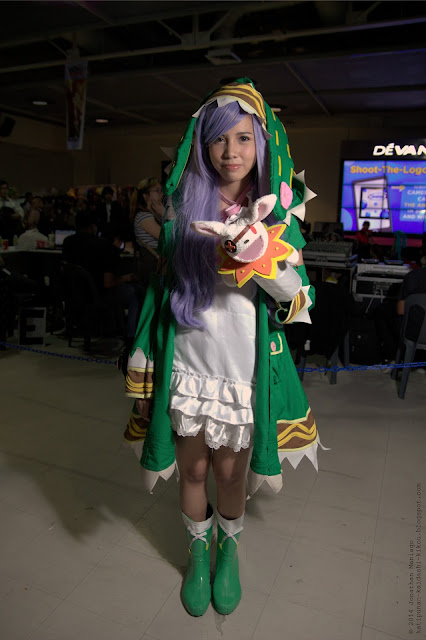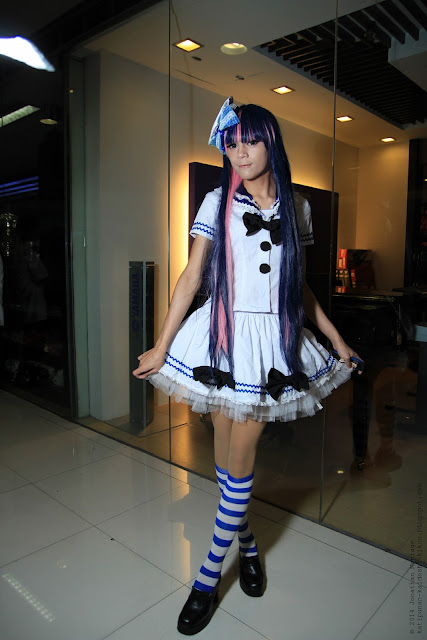If I had chosen photography as a profession rather than a hobby, I would have probably been fired after this event.
<photography jargon>
This event marked the second time that I made use of a detached external flash unit for subject isolation. Previously (during the Ozine Fest), I held the flash at arm's length, and this gave me a difference of about 2 stops between the subject and the rest of the background. However, I wanted to go further and push that difference to 3-4 stops.
This meant that the flash would have to be placed closer to the subject. I opted to use a monopod instead of a light stand because it offered greater mobility, and—more importantly—that was what I already owned.
Dark, elongated, extended when used, and spews out whiteness from the tip.
Can this contraption get any more Freudian?
Can this contraption get any more Freudian?
The results were generally favorable—when the flash unit actually worked. Day 1 of the event was a complete nightmare because the external flash (Nissin Di866 Mark II) randomly refused to fire even with fresh batteries for the flash and wireless triggers. This resulted in numerous embarrassingly underexposed shots, many of which were beyond salvaging.
A pity, because I really wanted to shoot this pair of energetic youngsters from Day 1.
Hoping to rectify this, I purchased an Eneloop charger along with a new set of batteries, and it seems to have done the trick since no hiccups were encountered during Day 2 despite higher power settings.
Anyway, the new lessons I've learned from this experience:
1) Always use the middle autofocus point only, then recompose. Enabling all of the autofocus points will only result in tragedy and tears.
Out of focus
Also out of focus
2) For Canon DSLRs, autofocus points blink once to confirm focus, but they stay red if focus cannot be obtained. Since it takes a moment to distinguish one from the other, turning on the focus confirmation beep speeds things up a bit when working in low light conditions.
3) For events like this, it may be worth investing in a camera which has custom user modes for instantaneous changing of settings. Heck, a Powershot G series compact camera might actually fare better than a 3-digit EOS DSLR.
4) Compared to using a light stand, the advantage of using a monopod is that the light source is significantly easier to move in crowded spaces at close range. However, this comes at a price because changing the focal lengths (i.e. zooming) and moving the camera's point of view both become ridiculously inconvenient since both hands are always busy. It also takes a bit of hand-eye coordination to position the flash when you can't see it because it's supposed to stay out of the frame.
For environments that allow shooting beyond a range of 3 meters, a light stand would be far more ideal.
4a) Adjusting the angle of the flash can reduce the amount of light that spills into the background.
4b) However, any gesture or prop pointing forward could result in shadows being cast over the subject (particularly the face). Some poses may benefit more from having the light bounced off the ceiling instead.
4c) Hats tend to cast a shadow over the eyes.
4d) Never have both the main light source and the camera below nose level; nostrils turn into glaring black holes.
4e) Reflective surfaces should be accounted for when positioning the flash.
4f) Cylindrical posts/poles tend to produce distracting highlights if the surface is painted or metallic.
4g) Even with this lighting technique, it's still the photographer's job to find an angle that minimizes background distractions.
Raiden at the maid cafe
5) Stop cropping off people's toes, goddammit.



























































thanks for the photo
ReplyDelete